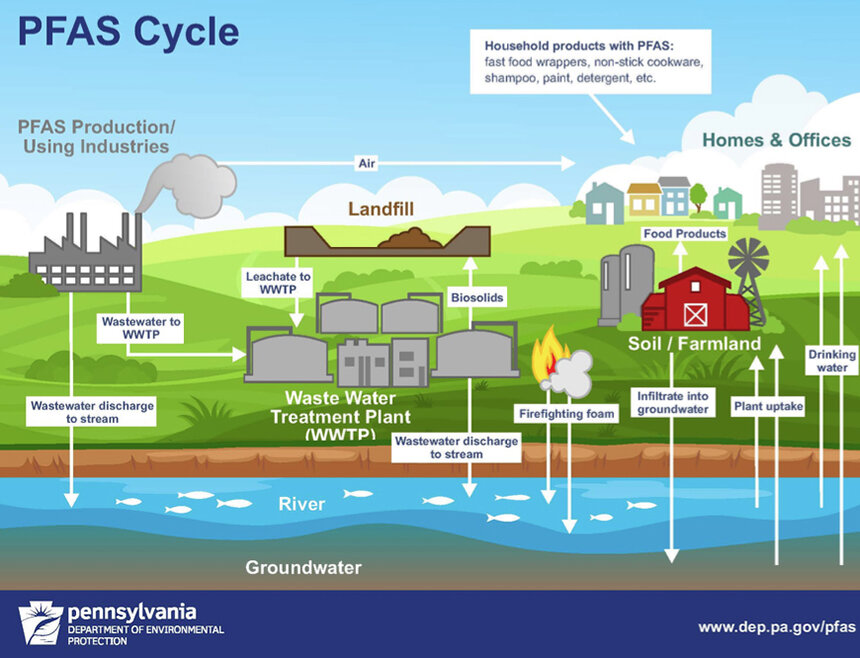Lead Poisoning Program Cuts Don’t Add Up
May 25, 2012
PROVIDENCE — Do this math: the number of Rhode Island children at risk for lead poisoning has increased an estimated six-fold this month. Meanwhile, the state’s lead poisoning prevention program is scheduled to shut down in late summer or early fall, because of federal budget cuts. For many present at the Statehouse on May 24, this sounded like a crisis.
The skyrocketing numbers in at-risk children call to mind a grim industrial disaster, but, in fact, the change is due to the Centers for Disease Control’s recent announcement that it has reassessed the “at-risk” blood lead level for children — lowering it from 10 micrograms per deciliter (µg/dL) to only 5.
Even this new number can be misleading, because the concept of a danger threshold doesn’t apply to lead. Growing evidence shows lasting damage in children even at very low levels. But the CDC’s “at-risk” number is the threshold at which doctors must report children to the Lead Poisoning Prevention Program, which helps families lower their exposure — as long as that program still exists.
According to the Childhood Lead Action Project, the Rhode Island nonprofit that organized the recent press conference at the Statehouse, 200 children were diagnosed with lead poisoning in the state in 2011. Had the new standard of 5 µg/dL been used last year, the number would have been 1,279. Activists, press and supporters stood in the Statehouse’s echoing marble rotunda, surrounding a playpen filled with 1,279 bright plastic balls — a visual metaphor for last year’s number of affected children.
Another visual — no metaphor here — was the photo of her two sons and daughter that Shelley Brown, 37, held resolutely at chest level while her husband Derek, 38, took the microphone. The Browns, who are both pastors at Liberty Christian Center in Taunton, Mass., moved into their Cranston home in May 2010. Their children, Elayna, Austin and DJ, are 9, 6 and 5. All three children are autistic and none had elevated lead levels before the move. The Brown’s new home, which Derek estimated was built in the 1930s, still had an original coat of lead paint on its door jambs and window sills.
While Rhode Island’s industrial history has left lead and other heavy metals in soil and old slag heaps, lead paint is a chief cause of children’s exposure. Lead paint was banned in the United States in 1977, and the Environmental Protection Agency (EPA) requires contractors working in homes built before 1978 to be specially certified.
But the Brown’s house, like many old houses, had merely been painted over with a fresh, non-toxic layer, which soon chipped to reveal the flaky lead paint below.
“What a lot of people don’t realize is that lead tastes sweet,” Shelley Brown said. So her two younger children, especially 6-year-old DJ, would put the flakes of lead paint in their mouths. The lead “exacerbated (DJ’s) autism symptoms and caused hyperactivity, a shorter attention span and an increase in atypical behaviors,” Derek Brown said.
The couple had all their children tested, and learned that both DJ and Austin are victims of lead poisoning. By last Christmas, DJ’s blood lead levels measured 43 µg/dL. At a level of 45, the CDC recommends chelation therapy, a chemical treatment that helps lead leech out of the system. Levels above 80 can result in coma, convulsions or death.
Shelley Brown said that when Rhode Island children test high for lead, their doctors automatically contact the state’s Healthy Homes and Childhood Lead Poisoning Prevention Program, which subsequently makes house calls, educates parents and provides the necessary materials to make homes safe.
“If it wasn’t for a program like this, I would have been lost,” Brown said. Program employees taught her how to clean the powdered lead paint from the carpet and how to wipe traces off the walls. DJ’s lead levels have gone down nearly by half, and continue to decrease. According to the CDC, a cleaner environment is the most effective way to reduce lead levels in children who test at less than 45 µg/dL.
While kids with lower levels than DJ may show no symptoms, low or moderate lead poisoning in children — who are significantly more vulnerable to lead than adults — can result in hyperactivity, learning disabilities, endocrine damage, poor bone and muscle development, and damage to many internal organs. Damage done by lead is frequently irreversible.
Children of color are disproportionately affected by lead poisoning, according to Jim Vincent, president of the Providence NAACP. “We at the NAACP see this as a civil rights — or human rights — issue,” he said.
The Healthy Homes and Childhood Lead Poisoning Prevention Program currently responds to every child in the state who shows a high lead level. All these families receive home inspections, education and support. The program also “oversees the licensing of lead professionals, conducts community education and enforces lead poisoning prevention policies.”
The program was funded in 2011 with $594,000 in federal money. Due to congressional budget cuts, every dollar of that funding was withdrawn for fiscal 2012. Without emergency intervention, the program will shut down in late summer or early fall. The budget cuts will affect similar programs nationwide.
To date, Washington, D.C., New Jersey, Texas and Minnesota have all found state-level funding to maintain their local programs. Advocates at the Childhood Lead Action Project noted that less than 1 percent of Rhode Island’s recently publicized $102.7 million state surplus would be required to save the program.
Local lawmakers hope to see change on a grander scale, however. Rep. Art Handy, D-Cranston, has sponsored House Resolution 8148, which calls for the federal government to restore the funding nationwide. Handy said Senators Jack Reed and Sheldon Whitehouse, both D-R.I., are advocating in Washington, D.C., for the budget cut to be reversed in 2013.
As the small crowd dispersed, Jeannine Casselman and her 6-year-old daughter Sabella transferred armfuls of the symbolic plastic balls from the playpen into bags. Casselman, who helped organize the event, is an attorney at the Rhode Island Center for Law and Public Policy. She works at Hasbro Children’s Hospital in Providence, where she helps pediatric families with housing issues — many involving lead.
Casselman has watched lead-poisoning stories unfold both inside and outside of the courtroom, and while some are tragic, others encourage her. “You hear your child’s lead-poisoned and your immediate reaction is to leave (the house that poisoned them),” she said. Sometimes one family will leave and another will move in to what Casselman calls “repeat-offender housing.” She’s heard landlords of dangerous buildings blame parents for choosing to live there.
But Casselman also has witnessed tenants, empowered through the prevention program, successfully educate their landlords about the hazards of lead. In one memorable court case, a woman who had been threatened with eviction for not paying rent brought a counter-action suit against her landlord, who remediated the lead hazards in her building and let her stay.
“I’m not just responding as a professional but as a mother,” Casselman said, helping Sabella transfer the colorful balls to a plastic bag. Casselman’s second child, Toby, is 3. “Sabella’s test came back at 1.3 and I was outraged, because I know there are no safe lead levels,” she said, noting that she has a “fabulous” landlord and a lead-safe home.
High background lead levels in post-industrial Rhode Island make the danger hard to avoid entirely, and this is why, according to Handy, the program is especially crucial for the state.
The Childhood Lead Action Project recommends that parents ask doctors to test kids younger than 6 for lead poisoning. Parents can also sign the group’s petition to restore funding, and attend the House committee hearing on the issue scheduled for Wednesday, May 30, at 2 p.m. in Room 313.
Dr. Michael Fine, director of the state Department of Health, said he and others are determined to see the lead poisoning prevention program continue. “We’ll be squeezing every sponge and shaking every tree in Rhode Island — and there’s a lot of trees — until we get this program funded,” he said.
Categories
Join the Discussion
View CommentsRelated Stories
Your support keeps our reporters on the environmental beat.
Reader support is at the core of our nonprofit news model. Together, we can keep the environment in the headlines.
We use cookies to improve your experience and deliver personalized content. View Cookie Settings



